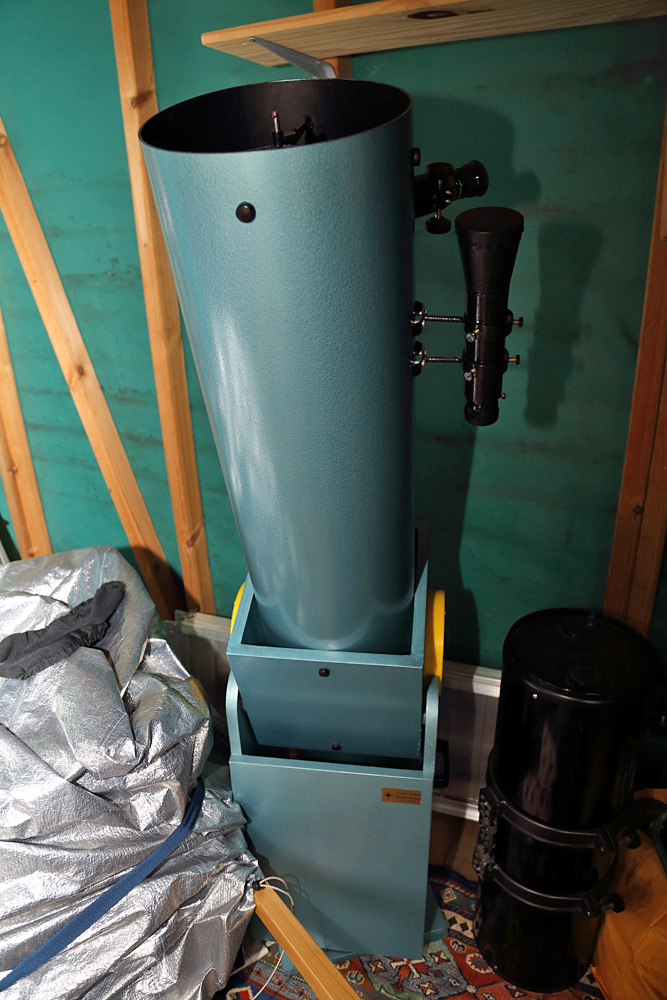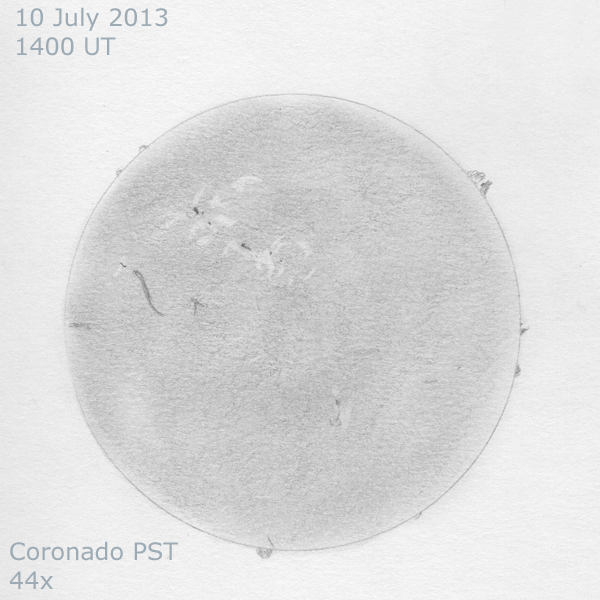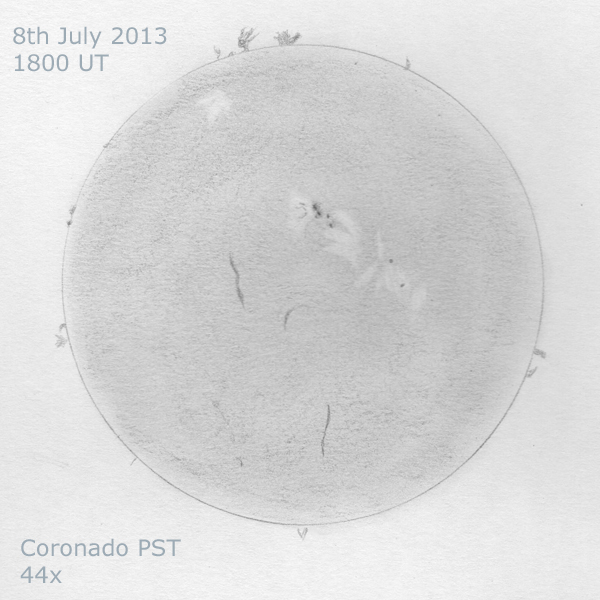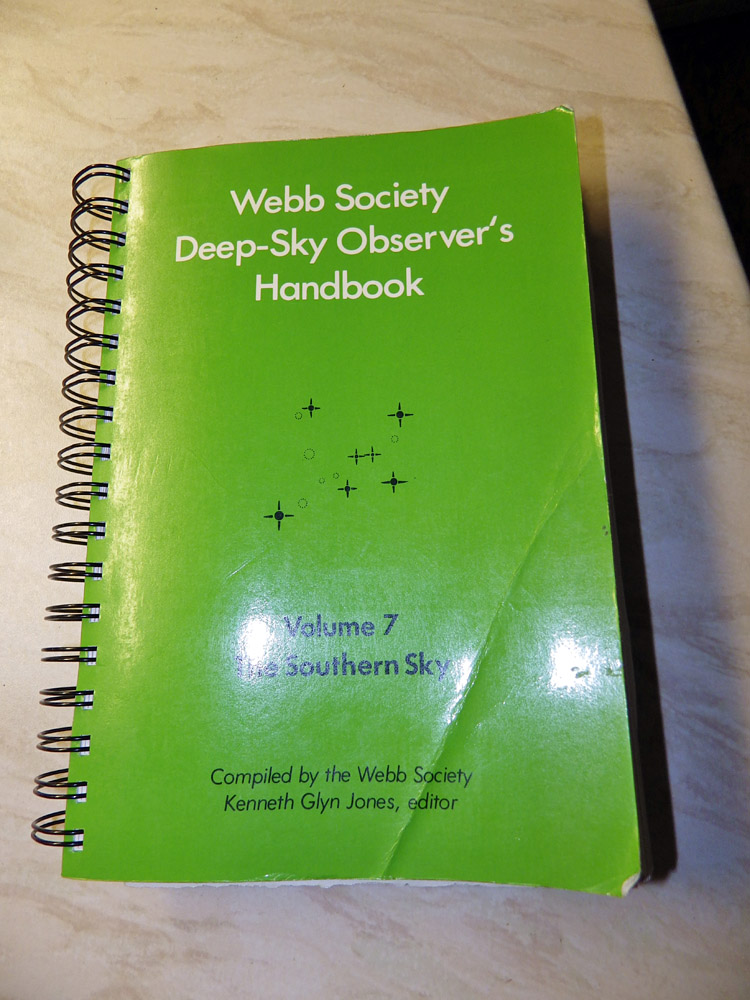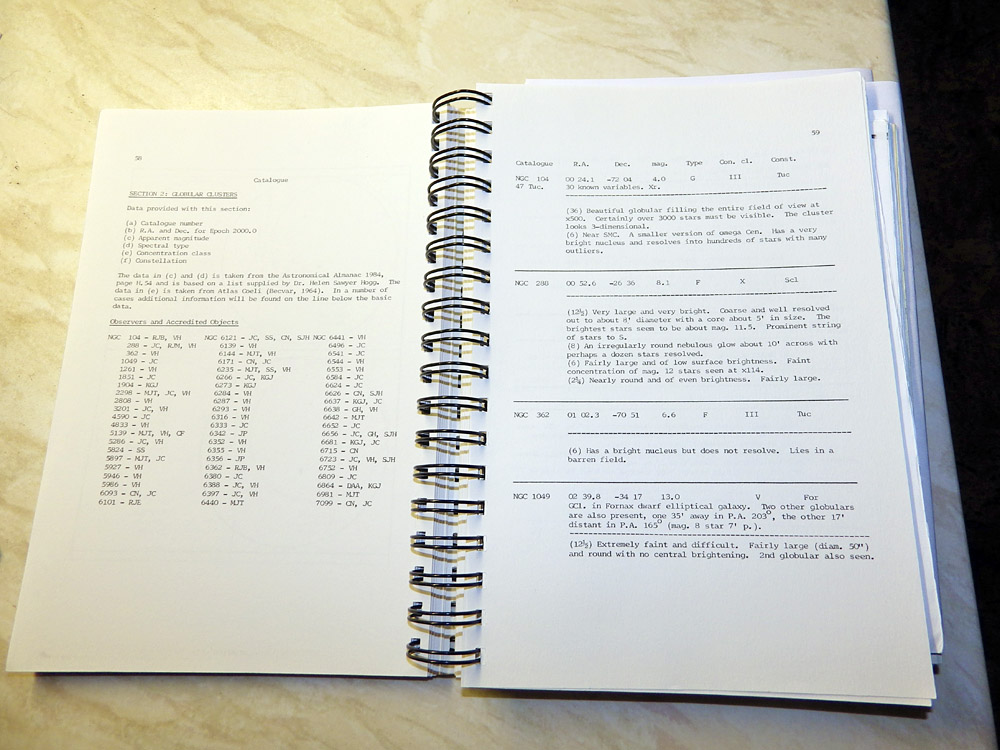My main telescope and the one used for most of my deep sky observing is, of course, my 18″ Dobsonian, built by David Lukehurst in 2011. However, there are times when it’s not worth getting the big telescope out, for short sessions, taking to a site with a better southern horizon or when the sky isn’t very co-operative and it’s at these times I get a smaller telescope out.
I’d been using a Celestron C8 Newtonian which was given to me 7 years ago but, to be honest, I don’t like it. The secondary mirror support keeps coming loose, with the result the secondary gets twisted so I have to realign it, and the f/4 primary mirror needs collimating each and every time, sometimes several times a night and the collimation bolts are a complete nightmare. Even my 18″, despite having to be wheeled out of the shed and assembled, doesn’t need collimating each time (but then the 18″ is extremely well-made). And, as for the equatorial mounting, that’s just a pain in the neck to use and I’m not fond of equatorial mounts anyway, not for visual use. I’ll sell this scope as soon as I can.
I found myself wishing for a small 8-inch Dobsonian to use and looked at the various websites of Telescope House, etc., but kept putting it off as I don’t have a spare £300 at present. Then I remembered that a friend, and fellow Vectis AS member, Graham Osborne, had an 8″ Dark Star Dobsonian that he’d been trying to sell for a while. I nearly bought it myself a few years ago but life got in the way and I forgot about it until today, so I emailed Graham and asked if he still had it. Turns out he did so I arranged to go and look at it. The mirrors are in good shape and the whole thing looks as good as new so I ended up parting with not a lot of money and coming home with a nice little scope.
Here it is, in its new home, with my 18″ (disassembled and under its cover) and the C8N for company. The photos had to be taken in the shed because it was raining outside.
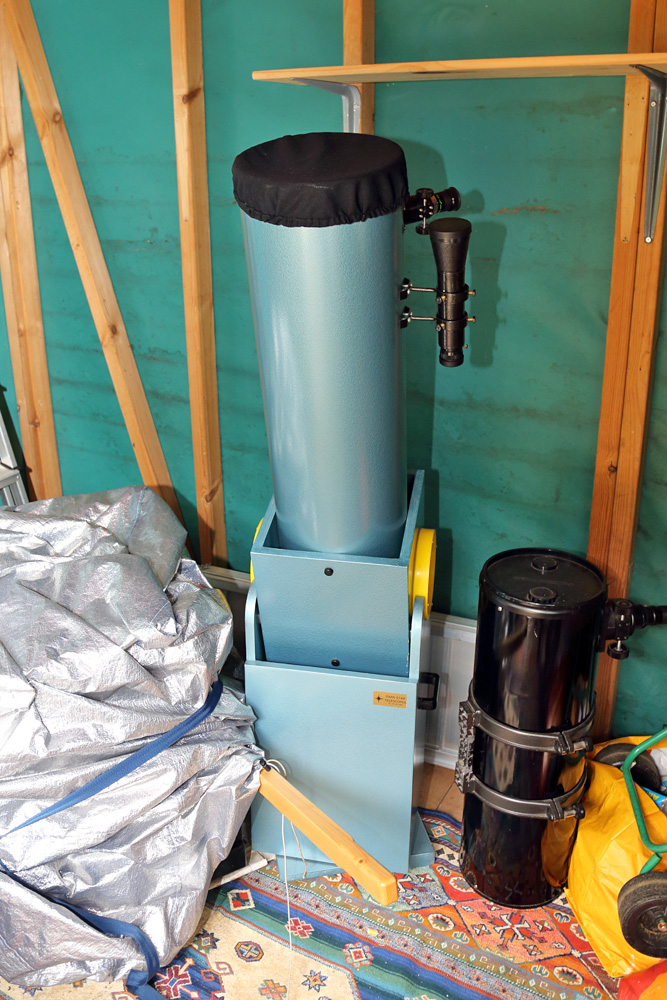
A close up of the top of the tube
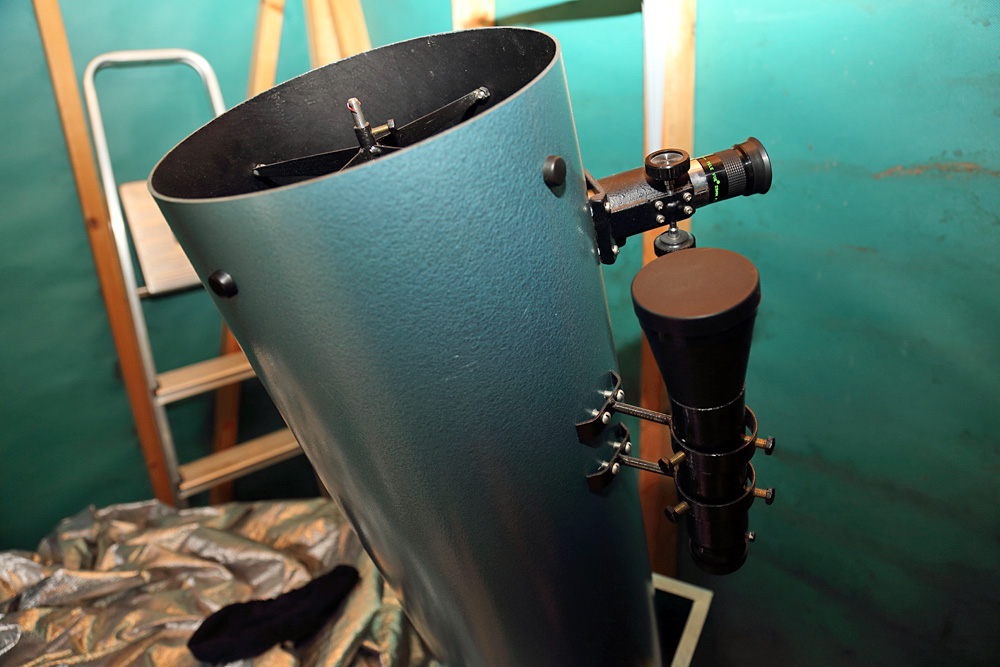
And with the dust cap removed
I am going to do some modifications to it. Firstly, I’ll put the Telrad on it in place of the finder, which is mounted in an inconvenient place (the other side of the focuser would have been better), and I will replace the focuser with a new one, maybe even a Moonlite, because I don’t like the existing one. Those minor issues aside, it’s in excellent condition and the mirror is 1/10th wave, which makes it a very, very good mirror indeed.
This telescope is actually an old acquaintance of mine. When I first joined VAS in 1992, I used to go observing with Graham and another friend Bob Bundell, we’d go to the car park at Rocken End, on the southern tip of the Island near St. Catherine’s Point and observe. I’d have my 6″ gas pipe Dob, Bob had an 8″ and Graham had this one, so it takes me right back to my early days of deep sky observing – and that’s another reason I am fond of 8″ scopes, some of my fondest memories are of observing with my old 8.75″ Newtonian.
